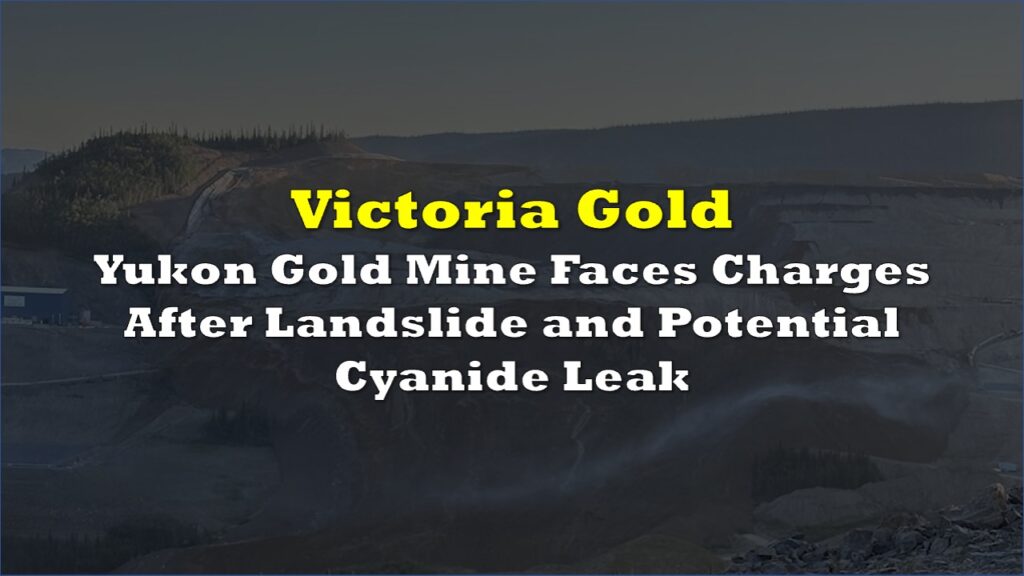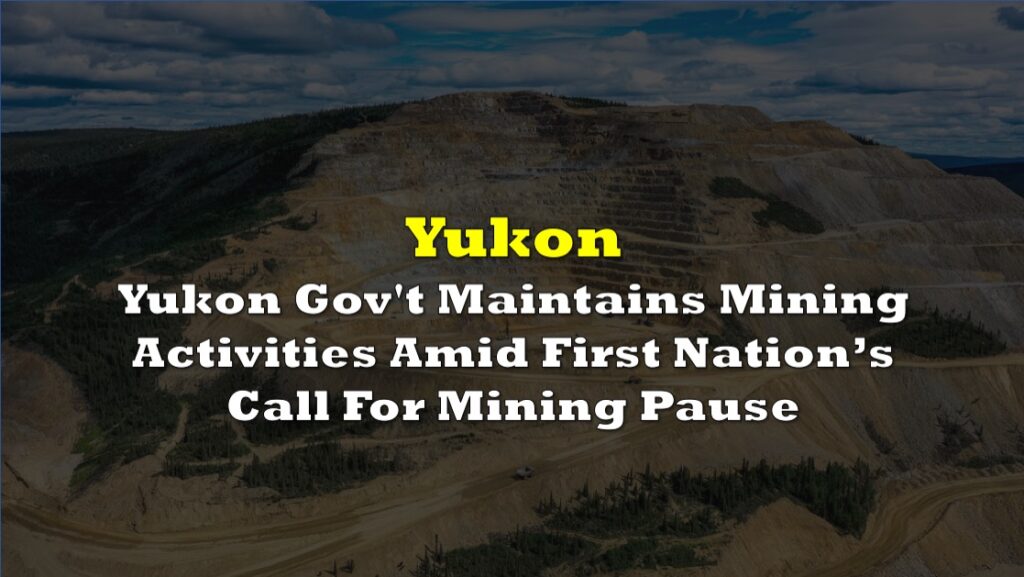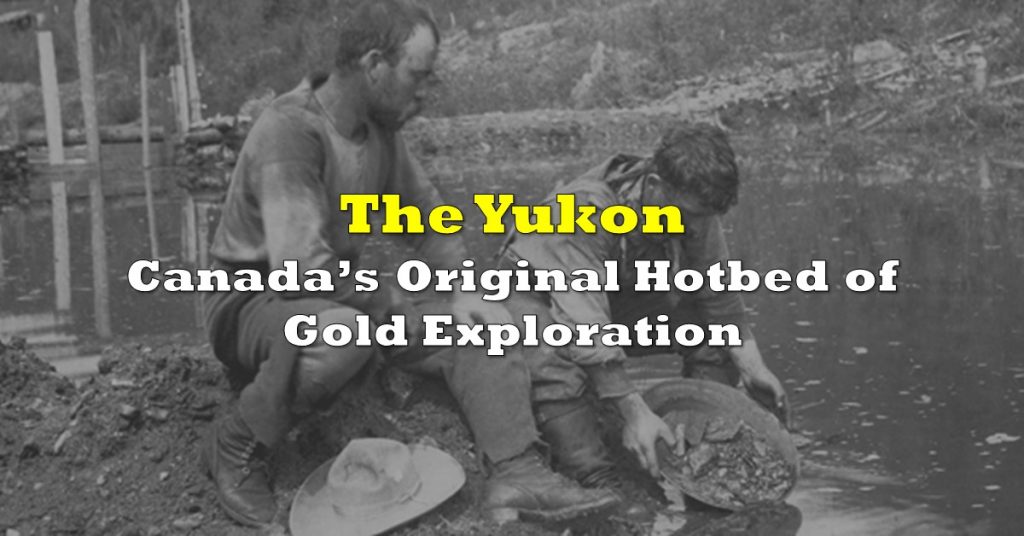Minto Metals Corp. (TSXV: MNTO) reported on Saturday that all operations at the Minto Mine, which is located within the Selkirk First Nation’s Territory in central Yukon, Canada, have been suspended. According to the firm, the Yukon government has officially taken over management and control of the site and will prioritize measures necessary to maintain environmental preservation.
“Needless to say ceasing operations at the Minto mine was an extremely difficult and disappointing decision, that was not taken lightly. We are acting responsibly in coordination with the Yukon Government to avoid any damage to the environment,” said CEO Chris Stewart.
During a technical briefing in April, Yukon government officials expressed worries about potential environmental dangers if the mine’s tailings storage issue is not resolved.
Tailings storage concerns
According to the government, Minto must act once the available storage capacity falls below 300,000 cubic metres. With a storage capacity of around 360,000 cubic metres, the facility is getting close to that mark.
The territory is seeing its fourth year in a row of above-average snow pack, raising concerns that the melt would overrun the mine’s water storage capacity. The mine is located around 40 kilometers from the Yukon settlement of Pelly Crossing.
Graphs given during a technical briefing showed that if nothing is done, spring melt could deplete storage capacity in May. This raises the possibility of untreated tailings water spilling into neighboring Minto Creek and then into the Yukon River, nine kilometers downstream.
At the mine, two pits serve as tailings management facilities, storing mine waste rock and contaminated water. The Yukon government told the mining owners to utilize a different pit.

“The company must divert contaminated water from the current water storage facilities to another on-site pit known as the Minto North pit to ensure safe storage prior to treatment,” said John Streicker, minister of Energy, Mines and Resources, during the April briefing. “At that time they’ve also been directed to temporarily cease depositing tailings during the spring snow melt to allow water storage levels to recover.”
The data reviewed at that time was also indicating how the mine’s tailings-storage capacity has altered over time. Capacity has reduced dramatically since January of last year. Storage capacity was closer to 700,000 cubic metres at the time. It was roughly 350,000 cubic metres in January.
According to the mine’s water licence, by October 31 of each year, the mine must have a minimum surplus storage capacity of at least one million cubic metres to handle spring freshet or flood flows. According to government officials, the mine has struggled in recent years to achieve that criterion.
“Our hope is that these actions will lessen the likelihood that the mine will become the direct responsibility of the government of Yukon and ultimately, taxpayers,” Streicker said at the time.
In response, Stewart reiterated the company’s commitment “to strong environmental stewardship which we demonstrated last year by temporarily shutting our milling operation down for a total of six weeks to handle the excess water we received during spring freshet.”
“With our investment into the water treatment plant over the past twelve months, we are in a much better position to treat and discharge larger volumes of water coming into spring freshet this year… Although water treatment is very capital intensive, we are prepared to allocate the necessary resources to ensure any water events do not put the Company out of compliance with this order,” he added.
In announcing the operation halt, the company touted that it “has invested a significant amount of money into improving the water treatment plants at the Minto Mine, doubling the mine’s water treatment capacity.” But it seems, it is not enough for the Yukon government not to assume care and take over.
State of Minto
In its recent annual financials, the firm reported $153.2 million in revenue compared to 2021’s $138.3 million. However, due to higher expenses, it ended with a net loss of $11.1 million versus last year’s net loss of only $2.0 million.
And while the miner was able to generate operating cash of $27.9 million, due to high cash burn via investing and financing activities, it ended the fiscal year with $0.9 million in cash. This is a drop from last year’s cash balance of $10.0 million.
Current assets came in at $32.2 million while current liabilities ended at $75.1 million.
“We are pleased that total revenue for the year ended December 31, 2022 increased by 10.7% to $153.2 million compared to the same period in 2021 however at the same time, the challenges we faced throughout the year increased our cost of production,” Stewart said during the earnings release.
For Q1 2023, Minto produced 175,944 ore tonnes, down from Q1 2022’s 238,979 tonnes. Head grade also fell down to 1.35% in the quarter compared to last year’s 1.83%. Copper sales were also down to 5.7 million pounds in Q1 2023 compared to 9.1 million pounds in Q1 2022.
“The Company recognizes a slow start to 2023 with a challenging and disappointing first quarter. Limited mining horizons combined with geotechnical constraints in the Cu-Keel zone has had an adverse effect on the production in the first quarter as we transition from predominantly mining in the Copper-Keel zone into Area-2 and Minto East 152 zones,” Stewart explained.

The Minto mine began operations in Yukon as an open pit mine in 2007. The business commenced underground development on the Minto South Deposits in 2012, while continuing to mine more open pits as the primary approach.
The property is approximately 26,000 hectares, found in the Minto Copper Belt, and is 100%-owned by the firm. Its mill is permitted for annual throughput of 1.53 million tonnes, averaging 4,200 tpd.
With seven years to life of mine, the property is touted to still contain 40% of current resource according to estimates.
Information for this briefing was found via Sedar, CBC, and the sources mentioned. The author has no securities or affiliations related to this organization. Not a recommendation to buy or sell. Always do additional research and consult a professional before purchasing a security. The author holds no licenses.










One Response
They missed their mark during due diligence as water storage and disposition of water release and tailing storage was a reality during the previous owners decision to put the property into care and maintenance.
Hopefully the employees are treated fairly in the closure and the remaining operational mines in the Yukon can gain some well qualified workers.
Hopefully the YK government take over does not add another black mark to mining responsibly!